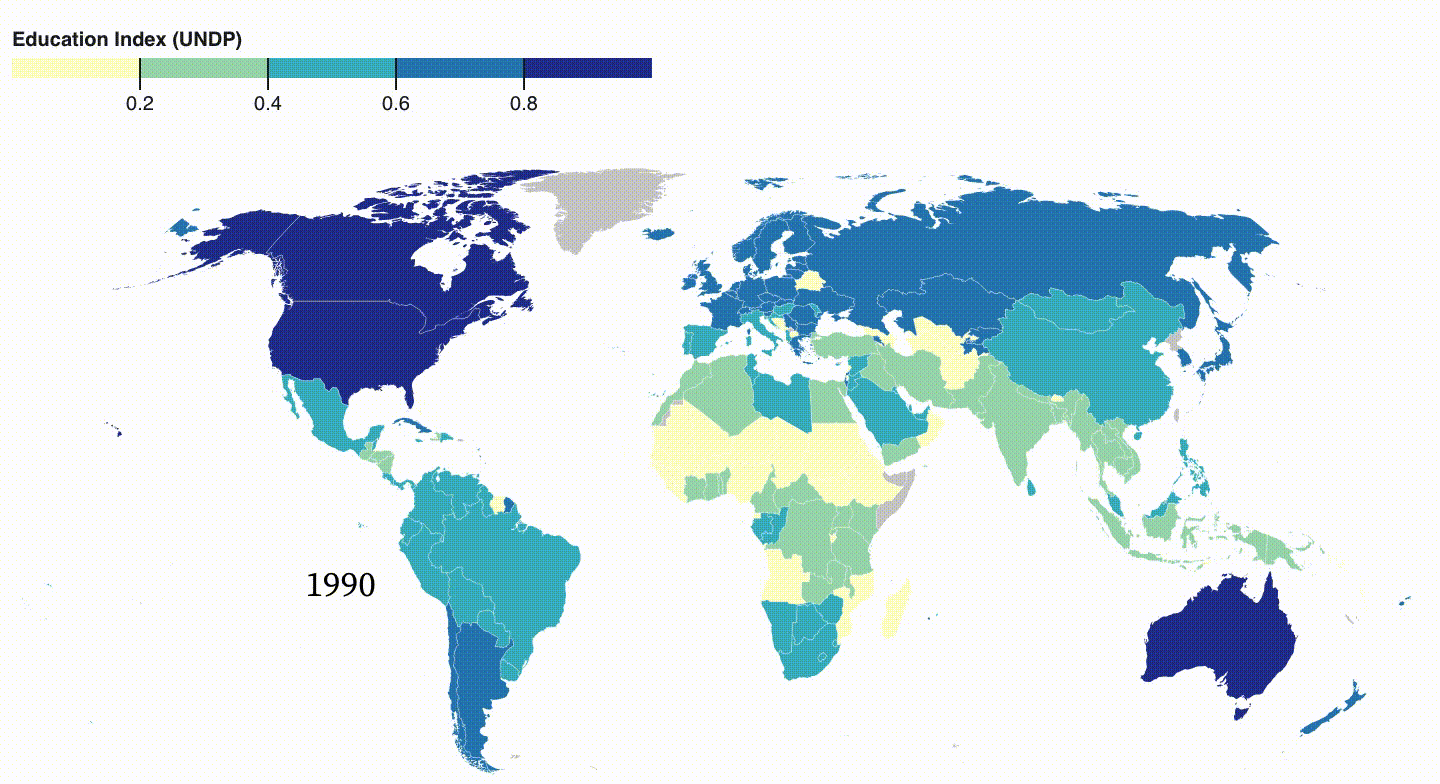Education Index on:
[Wikipedia]
[Google]
[Amazon]
 An Education index is a component of the
An Education index is a component of the
Human Development Report Office
Human Development Report 2007/2008 - complete
(12.0 MB) {{Population country lists Democracy Human Development Index Index numbers
 An Education index is a component of the
An Education index is a component of the Human Development Index
The Human Development Index (HDI) is a statistic composite index of life expectancy, education (mean years of schooling completed and expected years of schooling upon entering the education system), and per capita income indicators, wh ...
published every year by the United Nations Development Programme
The United Nations Development Programme (UNDP)french: Programme des Nations unies pour le développement, PNUD is a United Nations agency tasked with helping countries eliminate poverty and achieve sustainable economic growth and human dev ...
. Alongside the Economical indicators and Life Expectancy Index, it helps measure the educational attainment, GNI (PPP) per capita
This article includes a list of countries of the world sorted by their Gross National Income (GNI) per capita at purchasing power parity (PPP). For rankings regarding wealth, see list of countries by wealth per adult.
List
See also
*List ...
and life expectancy
Life expectancy is a statistical measure of the average time an organism is expected to live, based on the year of its birth, current age, and other demographic factors like sex. The most commonly used measure is life expectancy at birth ...
are also used with the education index to get the HDI
The Human Development Index (HDI) is a statistic composite index of life expectancy, education (mean years of schooling completed and expected years of schooling upon entering the education system), and per capita income indicators, wh ...
of each country.
Since 2010, the education index has been measured by combining average adult years of schooling with expected years of schooling for students under the age of 25, each receiving 50% weighting. Before 2010, the education index was measured by the adult literacy
Literacy in its broadest sense describes "particular ways of thinking about and doing reading and writing" with the purpose of understanding or expressing thoughts or ideas in written form in some specific context of use. In other words, hum ...
rate (with two-thirds weighting) and the combined primary, secondary, and tertiary gross enrollment ratio (with one-third weighting).
Education
Education is a purposeful activity directed at achieving certain aims, such as transmitting knowledge or fostering skills and character traits. These aims may include the development of understanding, rationality, kindness, and honesty ...
is a major component of well-being
Well-being, or wellbeing, also known as wellness, prudential value or quality of life, refers to what is intrinsically valuable relative ''to'' someone. So the well-being of a person is what is ultimately good ''for'' this person, what is in th ...
and is used in the measure of economic development
In the economics study of the public sector, economic and social development is the process by which the economic well-being and quality of life of a nation, region, local community, or an individual are improved according to targeted goals and ...
and quality of life
Quality of life (QOL) is defined by the World Health Organization as "an individual's perception of their position in life in the context of the culture and value systems in which they live and in relation to their goals, expectations, standards ...
, which is a key factor determining whether a country is a developed, developing, or underdeveloped country.
Calculation
A country's education index is calculated with the following formula , expected years of schooling, is a calculation of the number of years a student is ''expected'' to attend school, or university. In most countries, a master's degree represents the highest obtainable level of education, and obtaining one reflects 18 years of education. This means that if every student in a country enrolled in a master's degree that country's EYS index would be 1.0. , mean years of schooling, is a calculation of the average number of years of education a student over the age of 25 has ''actually'' received. It's based on education attainment levels of the population converted into years of schooling based on theoretical duration of each level of education attended. 15 years is the projected maximum of this indicator for 2025 and is thus used as the maximum for the index. This means that a country whose citizens all attained 15 years of education by the age of 25, would have an MYS index of 1.0.Data
Worldwide education indexes are provided by the UNDP's Human Development Report derived from the UNESCO Institute for Statistics and other sources.See also
*List of countries by literacy rate
This is a list of countries by literacy rate.
The global literacy rate for all people aged 15 and above is 86.3%. The global literacy rate for all males is 90.0%, and the rate for all females is 82.7%. The rate varies throughout the world, with ...
* School-leaving age
References
External links
Human Development Report Office
Human Development Report 2007/2008 - complete
(12.0 MB) {{Population country lists Democracy Human Development Index Index numbers